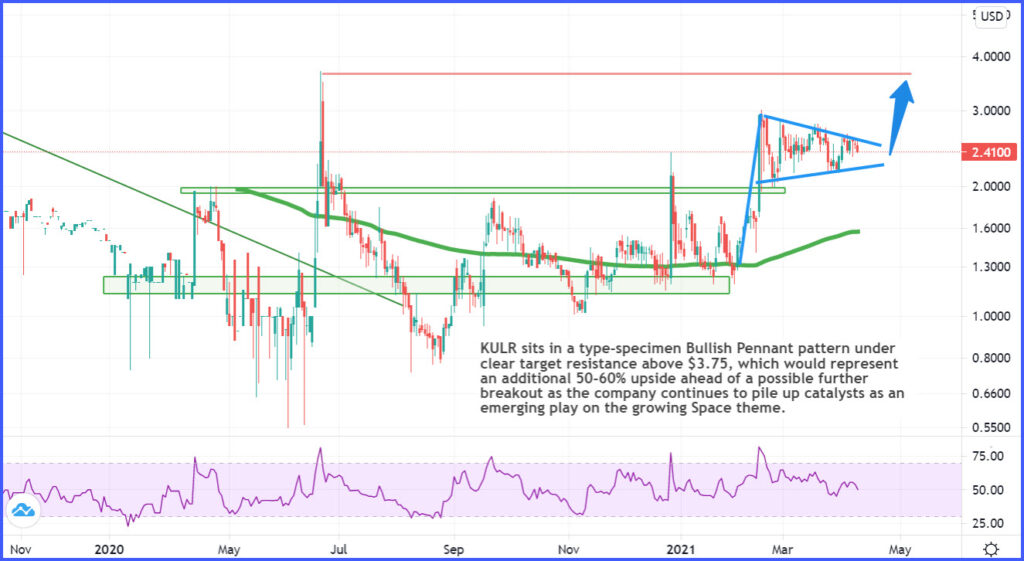The space race of the 1950’s and 1960’s was a legendary battle between world powers to secure first-mover advantage on the final frontier. By today’s standards, it represented a massive capital investment, but the end goal was remote. It was about discovery.
Now, decades later, we have finally reached a stage where commercialization is actively in progress and billions – and potentially trillions – in value is up for grabs.
Wall Street has fully caught on at this point, with new ETFs starting to roll out such as Cathie Wood’s new ARK Space Exploration & Innovation ETF (ARKX) and Direxion’s Moonshot Innovators ETF (MOON). We would expect others to follow.
Holdings include leading innovators in fields such as laser scanning, 3d imaging, 3d printing, ballistics, aerospace, navigation, and energy storage, with firms such as Trimble Inc (TRMB), 3D Systems Corporation (NYSE:DDD), Iridium Communications Inc (IRDM), and Microvision, Inc. (NASDAQ:MVIS) woven into the mix.
But there’s another upstart company that has an interesting story building toward potential inclusion in this narrative that speculative investors may want to take a close look at: KULR Technology Group Inc (OTCMKTS:KULR), which has developed a proprietary solution, in partnership with NASA, for a very difficult problem: how to 3D print a passive propagation resistant (PPR) and internal short circuit (ISC) augmented battery that even works in space.
The stock now sits in a type-specimen Bullish Pennant pattern under clear target resistance above $3.75, which would represent an additional 50-60% upside ahead of a possible further breakout as the company continues to pile up catalysts as an emerging play on the growing Space theme.
An Essential Puzzle Piece in the New Space Race
To say a company has a path toward becoming an irreplaceable piece of the emerging landscape in Wall Street’s space race in the years ahead, there has to be something the company offers that is essential to that story that is a matter of either protected IP or such established market leadership that few would dare compete on that note.
In this case, KULR Technology Group Inc (OTCMKTS:KULR) has a proprietary solution to something that is pervasively at issue where energy storage in space is concerned.
It has IP rights to the technology and credibility leadership that may be beyond competitive assault already at this stage given that this technology has already been developed in partnership with and used by NASA.
And there’s no brand that can compete with NASA when it comes to the new space race.
Energy storage is essential for doing anything at all in space. But you can’t simply make batteries and then launch them into space. The idea is to 3d print in space. That’s why the top space ETFs are filled with 3d printing companies.
The point is to efficiently launch 3d printing technology and some base materials into space. And then combine those materials with resources found in space – such as materials that can be found easily on the moon, for example – and then use that base of materials to fabricate everything else you need to conduct operations in space.
Why?
Because it costs about $15-20k for every 5 lbs you add to a launch into space.
KULR Technology Group Inc (OTCMKTS:KULR) has the market-leading technology for 3d-printable batteries. That puts it squarely in place as potentially a key piece of the space race puzzle.
“Through our partnership with KULR, we will now have the incredible ability to build space-optimized battery pack systems in-orbit,” said Brandon Lewis, Human Landing System Cross Program Analysis Coordinator. “We take the safety of our astronauts very seriously. KULR’s technologies will enable us to build safer battery packs that prevent dangerous thermal runaway propagation and protect our most valuable assets.”
As noted in the company’s release, the ability to 3D print in space has numerous advantages, including the potential to make human space exploration less costly; allowing for extended missions; and reserving cargo capacity for other valuable items and/or equipment. “The optionality to repair and replace battery packs in space with parts 3D printed in space is a complete game changer,” said Dr. Timothy Knowles, co-founder and chief technology officer of KULR. “3D printing of KULR’s PPR battery design will help lower the costs associated with battery pack transportation for the upcoming Artemis missions, where NASA will build sustainable elements on and around the moon in preparation for an eventual human mission to Mars.”




